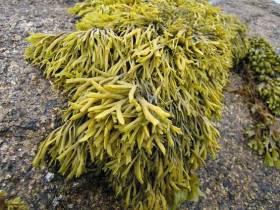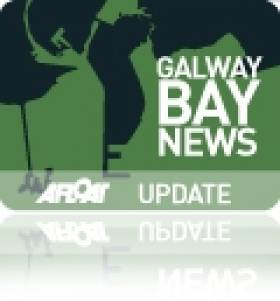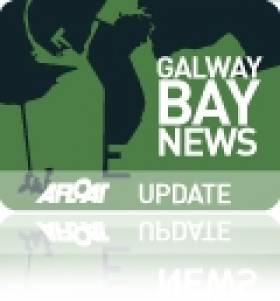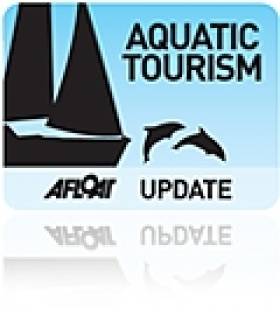Displaying items by tag: Seaweed
#Seaweed - Could breathing in the iodine released by seaweed on Ireland's coasts be improving our health?
The answer is quite possibly, according to new research as reported in The Irish Times this week.
Scientists at UCD and NUI Galway have concluded that iodine levels are highest among those regularly breathing coastal air rich in seaweed, which concentrates iodine from seawater.
Their paper in the Irish Medical Journal was informed by two decades of studies in three different environments in Ireland: coastal cities (Dublin, Belfast, Galway), inland areas (Mullingar and Dungannon) and seaweed-rich Carna in Co Galway, where almost half the population has iodine intake above the WHO recommended level.
The Irish Times has much more on the story HERE.
Coastal Communities Integral To Any 'Blue Growth' Strategy Says UN Expert
#CoastalNotes - The rights of coastal communities involved in the likes of small-scale fishing and seaweed harvesting must be respected in any 'Blue Growth' strategy, a UN expert has said.
The Irish Times reports on comments made by UN fisheries chief Dr Rebecca Metzner upon her visit to Galway this week, where she heard the concerns of inshore fishermen who have protested against large-scale fish farming.
Local campaigners breathed relief in December when Bord Iascaigh Mhara (BIM) withdrew its application for what would have been the largest organic salmon farm in Europe, based off the Aran Islands in Galway Bay.
While recognising that aquaculture is required to "fill the gap" in the growing global demand for seafood, Dr Metzner emphasised that dialogue over shared access between local communities and larger commercial interests should be fundamental to any such plans.
She also heard from Connemara seaweed harvesters, who fear the loss of access to the coastline over legislation that may allow harvesting rights to be snapped up by much bigger State-owned enterprises – a situation the Government promised to review two years ago.
The Irish Times has more on the story HERE.
BIM Report Says Ireland Could Take Bigger Spot In Seaweed Market
#Seaweed - Seaweed cultivation could be a big winner for jobs and the economy, according to a new report by Bord Iascaigh Mhara (BIM).
The Irish Times has more on the report commissioned for a conference held by the Irish sea fisheries board in Limerick yesterday (18 November), which recommends bumping up to commercial farming of two 'brown' seaweeds, Alaria esculenta and Laminaria saccharina, grown in West Cork and Dingle Bay.
That's in addition to targeting high value 'red' seaweeds used as nori in Japanese cuisine - as well as dulse or dilsk, of which Ireland is already the second largest producer.
These are just a tiny fraction of the 500 or so types of seaweed native to Irish waters, and alone could provide for as many as 200 new jobs between farming and processing, according to BIM.
The report comes after seaweed was promoted as the main theme of the Burren Slow Food Expo this summer, with the likes of Darina Allen singing the praises of the versatile foodstuff.
It also comes some months after the Government promised a review of seaweed harvesting rights over concerns along the Connemara coast at growing commercial interest in what's an established traditional coastal community activity.
Why Does The Central Bank Not Recognise Marine?
#islandnation – Having written last week about the lack of national recognition for our maritime heritage I received a press release about the Central Bank honouring John Philip Holland, the Irish inventor of the submarine.
I am pleased to see that the Central Bank has taken such a step but, perusing the media releaseon the Central Bank website, I noted the quote from the Central Bank’s Director of Currency and Facilities Management, Paul Molumby: “This is the first in a new series that the Central Bank will issue to honour Ireland’s impressive scientific and technological tradition.”
Not a single reference by the Central Bank to the great maritime tradition of Ireland in launching the coin about an invention, fundamental to which was the marine sphere.
Mr.Molumby is quoted further as saying that “John Philip Holland’s life and achievements were extraordinary. He played a significant role in the development of submarine navigation and following his emigration to the USA, he designed the first working submarine.”
Indeed, he did, but Mr.Molumby and the Central Bank omitted mention of the marine in the technological development they were honouring.
At least the Bank went to the Marine Institute in Galway to launch the coin.
The Institute issued a press release with the same quotation, but Dr. Peter Heffernan, the Institute’s CEO, did mention at the launch that Ireland has “a strong tradition of innovation and we at the Marine Institute are very proud to maintain that link with the history of marine technology. We named our remote operated vehicle (ROV) after John Philip Holland.”
This ROV honours the legacy of a man who used the maritime sphere for innovation, but the Central Bank in honouring him do not even use the word ‘marine.’
The Marine Institute is using the ROV on surveysof mid-Atlantic volcanic vent fields and new animal communities on the deep canyons of our Continental slope, as well as working on crucial fisheries, environmental and climate changes and assisting in the development of new marine sensor technologies.
The Central Bank is charging €44 for the €15 coin according to the press release.
Am I being tendentious in making this point?
Perhaps, but where there is neglect of the maritime sphere at the highest levels, it should be challenged and the more it is, the more those disregarding our maritime traditions and potential will be forced to change their attitude.
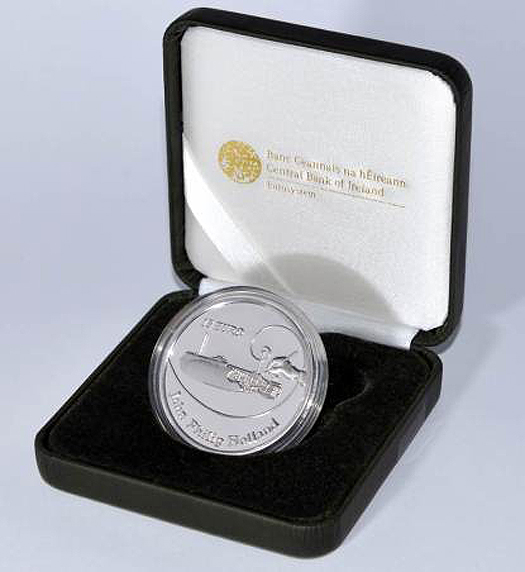
While the issuing of the coin (pictured above) is welcome, I respectfully suggest to the Central Bank that it acknowledge the maritime sphere and note that Holland’s invention relied fundamentally on the marine.
FISH GUTS AND DIESEL AND THE RESTLESS SEA
Have you ever wondered what it’s like to be a fisherman? With Autumn having arrived and Winter not far behind, life on the ocean wave can be tough, rolling and plunging as the boat hits heavy seas while fishermen struggle with lowering and hauling of nets to catch the fish which we can eat in more pleasant surroundings.
Paul McDonald is a songwriter who wrote much of his work in the heart of Dublin, where he had a cottage in Copper Alley. But he also had experience as a fisherman out of Galway. The song, “Fish Guts and Diesel,” on his CD ‘Crazy Old World’ tells his story of life aboard a trawler many miles out to sea off the West Coast – on the Porcupine Bank. You can hear it on this month’s edition of THIS ISLAND NATION (above), my monthly maritime radio programme that is broadcast on a number of community radio stations.
“As long as I live I’ll never forget the smell of that combination of fish guts and diesel,” he said.
There are some beautiful lines in the song which anyone who has kept a night watch at sea will empathise with:
“Sometimes in the dark as you gaze in the night,
Your mind’s in the stars as your thoughts they take flight
And then a Force Seven brings you back down to earth
And you battle the elements for all that your worth.”
You can hear the song at the start of this month’s programme. As I broadcast it, I could almost see those dead fish eyes which he sings about, staring up at me from the catch hauled aboard. Having been on a few trawlers in my time, occasionally in not-too-pleasant conditions and even though I sail and have sailed in rough weather, I admire hugely those fishermen whose stomachs, I think, must be made of cast-iron to withstand the conditions in which they have to work. I think anyone with an interest in the sea will like the song.
FOREIGN BOATS COST IRELAND OVER A BILLION EUROS
Incidentally, the huge value of fish caught in Irish waters by fleets from France, Spain, Portugal, Holland and the UK, is shown by the figures which the Department of Agriculture, Food and the Marine has released for catches taken last year from around Ireland. The total value was €1.16 billion. That would be hugely valuable to this nation’s economy, but regrettably Ireland’s share of this catch was only 17 per cent in value. The total catch taken from Irish waters 1,040,117 tonnes, but Irish boats were allowed by EU regulations to catch only 23 per cent of this tonnage. These figures prove just how much the EU gets in monetary value from Ireland. Little is heard about this from economic commentators or politicians who tell us how grateful we should be to the EU, but the reality is that the EU gets a lot of money from Irish waters. Our fishing industry, rather than shrinking in size, should be much bigger, with economic and employment benefit, if the riches of Irish waters had not been given away by Irish governments .Tellingly, the summary line in the figures compiled by the Department says that the economic value of €1.16 billion which they quote for fish caught in Irish waters “… represents a conservative estimate.”
BROADCASTING FROM THE COASTLINE

Youghal seafront
THIS ISLAND NATION is broadcast from the studios of Community Radio Youghal on the coastline of East Cork and the banks of the River Blackwater. I mention on the programme W.M.Nixon’s story about the GP 14 sail up the Blackwater from Youghal, which was reported on Afloat last week. This has raised interest in the sport. The Kathleen and May will be remembered as the great schooner which linked Youghal with the UK and there are many other stories of Youghal seafarers in a town with a great maritime tradition.
Next month, following listener interest, the programme will increase its slot from monthly to fortnightly.
SEAWEED IS NOT JUST A WEED

Also on this month’s programme I talk to The Sea Gardener, Marie Power (pictured above), in Tramore. She grew up on what’s known as The Copper Coast of County Waterford, a fascinating part of the countryside and has been running seaweed workshops for several years on a voluntary basis, even though her professional background is in management and training consultancy. Seaweed is not just a weed she says – and she is very definite about that. Listen to hear more.
HALF THE COUNTER IS FARMED
Nearly half of the fish which the public sees on fishmonger’s counters has been farmed. So Richie Flynn, IFA Aquaculture Executive, told me when I interviewed him. “This is something which should be encouraged for the future of coastal communities right around the coast,” he said, but added that the Government’s attitude towards licensing “is still a problem for aquaculture development.”
Email: [email protected]
Twitter: @Tom MacSweeney
Seaweed Theme in Burren Slow Food Festival
#slowfood – Food critic Sally McKenna, TV chef Darina Allen and food writer Dr. Prannie Rhatigan are among the participants in the 2014 Burren Slow Food Festival, details of which were announced today.
Supported by the Burren & Cliffs of Moher Geopark and also featuring members of the Burren Food Trail and the Burren Adventure, the 8th annual festival takes place in Lisdoonvarna, Co. Clare, on the weekend of 24-25 May.
Seaweed is a common theme across the Festival Programme this year.
Author of "Irish Seaweed Kitchen", Prannie Rhatigan GP is hosting a demonstration and talk on how the thousands of tonnes of seaweed washed up on Irish coastline each day can be exploited for their potential as a foodstuff.
Meanwhile, Sally McKenna of John and Sally McKennas' Guides (formerly The Bridgestone Guide) and Stefan Kraan, author of "The Science and Gastronomy of Umami", will be discussing the benefits for Ireland's seafood industry in harvesting seaweed.
The festival also features food sampling of local artisan foods, a chance to meet local producers and growers, engage with fellow foodies, and enjoy cookery demonstrations from well-known chefs including Jess Murphy, Kai Restaurant, Galway; John Sheedy, Sheedy's, Lisdoonvarna; and Aidan McGrath, Wild Honey Inn, Lisdoonvarna.
Other highlights of the weekend include a talk by Slow Food Ireland President and chef Darina Allen; a Wild Food Foraging Walk hosted by Oonagh O'Dwyer from Wild Kitchen in Lahinch; and a demonstration of the essential skills of making handcrafted fine chocolates by Burren Chocolatier and Burren Food Trail Kasha Connolly.
The main festival banquet on Saturday night will be prepared by Vivian Kelly of Kierans Kitchen at the Roadside Tavern who will serve Gleninagh Lamb, Burren Smoked Irish Organic Salmon, desserts from Fabiola's Pâtisserie and wines from Burren Fine Wine & Food.
Government Promises Review Of Seaweed Harvesting Rights
#Seaweed - Minister of State Kathleen Lynch has promised to review legislation pertaining to right for harvesting seaweed in Connemara over recent local concerns over commercial interests in the region.
As previously reported on Afloat.ie, coastal communities north of Galway Bay fear their rights to the traditional activity would be threatened by allowing larger businesses - such as the State-owned Arramara Teoranta - to move in.
Now Galway Bay FM reports that the Department of Environment has admitted there is a conflict between the Foreshore Act and the rights of private landowners on the coastline. More on the story HERE.
Connemara Seaweed Harvest Licensing Raises Local Hackles
#Seaweed - Galway Bay FM reports on some consternation over a new licensing regime for seaweed harvesting in Connemara to the north of Galway Bay.
Harvesting seaweed is an established tradition among coastal communities in the region, but locals fear their activity will be threatened by allowing larger businesses to move in.
Two public meetings have taken place this week to discuss the implications of various companies applying to the Department of the Marine for harvesting licenses - one of which, the State-owned Arramara Teoranta, wants rights on the coastline from Connemara to West Mayo.
Galway Bay FM has more on the story HERE.
Sligo's Seaweed Spa A Hit With Locals and Tourists Alike
#Tourism - How's this for a unique winter break in Ireland - a visit to a century-old seaweed bathhouse in Sligo, anyone?
That's what Guardian writer Nick Fisher did recently when he and his family spent a week in the north-west to partake of Kilcullen's Seaweed Baths, right next to the shore at Enniscrone beach.
Angling is the big tourism draw for the region, now that the salmon season is well underway, with the River Moy providing all the sport a caster could want at any level.
But it's the seaweed baths - fed with water and fresh seaweed from Enniscrone Bay - that put a unique stamp on the whole experience, according to Fisher.
"People with skin conditions... as well as sportsmen and women love these baths," he writes. "Many of the local pensioners have season tickets ('To warm their old bones in the winters') and I'm told it is a very popular hangover cure.
"After the hot silky seaweed soak, the stinging, cleansing, pins-and-needles of the cold seawater shower leaves a bather feeling newly minted."
The Guardian has more on the story HERE.


























